
If you’re concerned about your kidney or kidney stones, then you’ve probably heard about oxalates. This type of natural compound can be found in many foods, but may not be good for your health, especially in large doses. Oxalate rich foods often double as foods that cause kidney stones, which is one reason to limit your oxalate intake.
The problem is the way that oxalates behave in your body. Some of the oxalates you consume bind to calcium and leaves the body. Unbound oxalate, on the other hand, leaves the body in urine. This oxalate can begin to crystallize and form kidney stones, especially if you are not well hydrated.
While oxalate rich foods still have health benefits, focusing on a low oxalate diet and increasing your water intake is a key way to protect your kidneys and decrease the risk of kidney stones. Doing so is critical if you’ve had kidney stones in the past or have kidney disease, as both issues may increase your risk.
As you’ll see from this list, there are many high oxalate foods, so you can’t really cut oxalates out of your diet entirely. You shouldn’t try to do so either, as many of these foods are also high in nutrients. It’s much better to pay close attention to the foods that you eat and limit your oxalate intake.
People following a low oxalate diet often aim to have around 100 mg of oxalates per day or perhaps even just 50 mg. Others can often eat around 200 mg of oxalates per day without any problem at all.
Many high oxalate foods have around 40 mg of oxalate in a typical serving. It’s easy to see how you could overeat oxalates, even if you’re not on a low oxalate diet. Still, planning your food well can help you to keep your oxalate intake in check and still eat the foods that you love.
Oxalate Rich Foods (With Pictures!)
Legumes

Legumes are controversial. They’re popular for their nutrients and also tend to be a great vegan source of protein. However, legumes are also high in oxalates.
Dried beans of all types are particular culprits. You can decrease the oxalate content by soaking the beans overnight or for an even longer period. Soaking the beans first makes them easier to digest too, which is another reason for taking this approach. Boiling beans can reduce oxalate content too.
Other approaches are sometimes recommended, including fermentation and sprouting. Both options are useful for improving digestibility, but they don’t tend to strongly affect the level of oxalates.
Spinach

Spinach is an incredibly healthy vegetable, one that is packed with countless nutrients, along with powerful plant-based compounds. And yet, it is also one of the worst culprits for oxalates. A serving of cooked spinach, incredibly, can contain more than 650 mg of oxalates. This is far above the amount of oxalates that you should be eating in a day.
As a result, spinach is one of the few foods that you should cut out entirely on a low oxalate diet.
Cutting out spinach may sound like a bad plan when you consider all the nutrients that it offers. But, other types of dark leafy greens are nutritionally powerful too and they don’t contain nearly as many oxalates. Kale, for example, is low in oxalates and is often seen as being a better choice for nutrients anyway.
Steaming dark leafy greens is an easy way to decrease their oxalate content further. The same pattern is true for other high oxalate foods too, as cooking will mean there are fewer oxalates in the food that you’re eating. Just be wary of your portion sizes. If cooking the food means that you’re going to eat twice as much, then you haven’t done yourself any favors.
Rhubarb

Rhubarb is an interesting vegetable, one that we extend to use with sweet rather than savory dishes. While rhubarb can be appealing, it’s another choice that is very high in oxalates. This time you’re looking at more than 500 mg of oxalates in a single serving.
With an oxalate level this high, even cutting down your serving size of rhubarb probably won’t be enough. Instead, this is another vegetable that you may need to entirely say farewell to.
Millet
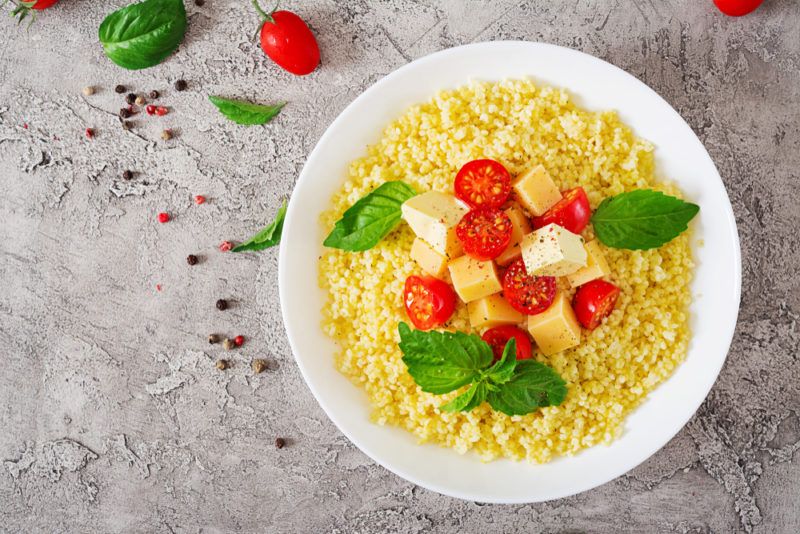
Millet is a pseudocereal. It’s mostly used as birdseed in the United States, but can also be used in the same way as options like couscous or quinoa. As with most pseudocereals, millet actually consists of tiny seeds that you’re often cooking and using much like a grain.
Interestingly, the term millet refers to the seeds from a collection of different plants, rather than a single species. There are some differences in the nutrition from one species to the next, with pearl millet and finger millet having the highest amounts.
As is often the case, the oxalate content does decrease with cooking. This suggests that you can still have some millet, even on a low oxalate diet.
Buckwheat Groats

Buckwheat is another type of pseudocereal. And, despite the name, buckwheat isn’t related to wheat at all. It’s more closely related to rhubarb – a relationship that may explain the problematic oxalate content.
Groats are a common way to eat buckwheat. The term refers to the hulled buckwheat seed (as opposed to buckwheat flour, which is another way that buckwheat is used).
The groats are nutritious in many ways. They’re gluten free too. However, you’re still looking at more than 100 mg of oxalate per serving. That’s more oxalates than you want from a single serving of anything.
Amaranth

And, while we’re on the topic, amaranth is an especially problematic pseudocereal. It ranks high in lists of oxalate-rich foods, containing more than 1,000 mg of oxalates in an 100 gram serving.
The exact amount of oxalates is likely to vary depending on the species of amaranth, as there are more than 75 species within the Armaranthus genera. Even with this variation, the levels of oxalates are likely to be significant for most, if not all, of the species.
As with other foods, cooking will decrease the oxalate content. This is helpful, as amaranth is generally cooked before it is eaten. In fact, amaranth tends to be boiled, which is the best approach for lowering oxalates.
Other Grains And Pseudograins

In fact, most types of whole grains and whole pseudograins contain a decent amount of oxalates. This includes wheat, grits, and brown rice. The levels of oxalates aren’t as bad as some of the other foods on this list, but they’re significant enough that you need to be a little wary of your intake.
This is where a key problem comes into play. Whole grains are an important part of a healthy diet. They’ve been linked to longer life and a decreased risk of some diseases. You’re not going to get the nutrients that you need by regularly skipping out entire food groups.
And, on a side note, the oxalate content of grains doesn’t mean that you should skip all grain-containing foods. Many will still be good for you. Some aren’t even that high in oxalates. For example, a slice of white bread tends to contain less than 10 mg of oxalates.
This pattern reinforces the importance of calculating your oxalate intake and planning your diet, rather than cutting out grains entirely because of their oxalate content.
Nuts

Much to the disappointment of many snackers, nuts contain oxalates as well. While the oxalate level isn’t horrible, it’s very easy to eat more nuts than you intend to.
Almonds and cashews are some of the worst choices for oxalates. This is a shame, as they’re both common nuts for snacking. For example, a serving of 11 almonds provides more than 120 mg of oxalates. And, let’s face it, even sticking to 11 almonds in a serving isn’t always easy.
If you love your almonds, keeping your intake low enough to be healthy could be a problem. For people who struggle to stick to a small portion, avoiding nuts entirely could be a better choice.
Peanuts

Peanuts are technically legumes rather than tree nuts, but this distinction doesn’t impact their oxalate content at all. In fact, a 100 gram of roasted peanuts contains more than 180 mg of oxalates.
This also means that peanut butter tends to be high in oxalates too. Peanut butter is worse in some ways, as it’s very easy to eat more peanut butter than you intend too.
Indeed, you need to keep a close eye on all types of nut butter when you’re on a low oxalate diet. Make sure that you keep to small portion sizes if you use nut butter. This may involve measuring out a portion of nut butter, rather than using it straight from the jar.
Seeds
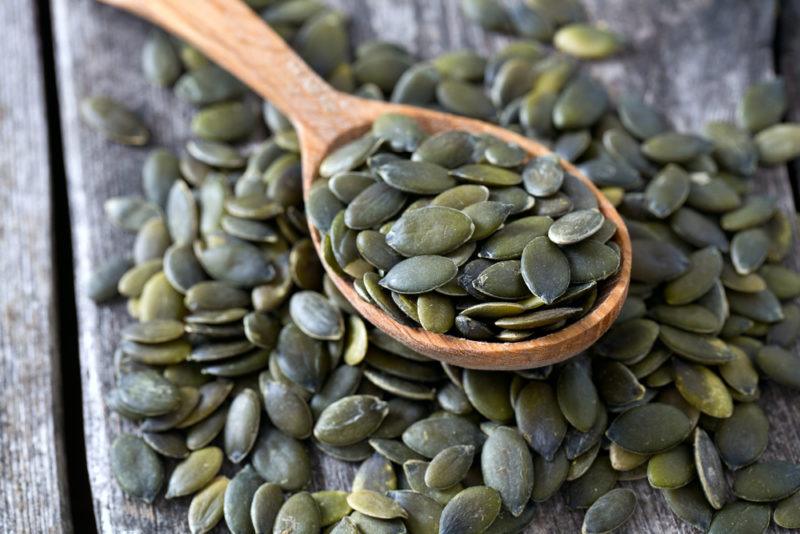
The problem with seeds is much the same as with nuts. While the oxalate content isn’t horrible, it’s easy to eat a large number of seeds in a sitting.
The oxalate content varies dramatically here, which makes some seeds much better than others. Pumpkin seeds are one of the highest oxalate choices and sunflower seeds are getting up there too. Flaxseeds, on the other hand, are relatively low in oxalates.
Of the two options, seeds are much lower in oxalates than nuts. This means that savory snack lovers will be much better to focus on seeds.
Chocolate

Unfortunately for many, chocolate does contain oxalates. This includes dark chocolate, milk chocolate, cocoa, and even cacao nibs. The oxalates come from compounds in the cocoa bean, which means that dark chocolate is higher in oxalates than milk chocolate.
Dark chocolate also has less calcium than milk chocolate, so it has a poorer ratio of oxalates to calcium. This combination of features creates the unusual situation where milk chocolate is better, at least in one sense, than dark chocolate.
The oxalate content of chocolate and cocoa means that some chocolate-based foods will be high in oxalates too, including chocolate milk. This is something that you’ll need to check on a case-by-case basis, as some foods will be higher in oxalates than others.
Of course, you don’t need to cut chocolate out of your diet. Simply watch your serving size and how often you eat it.
Raspberries

Berries are often collectively listed as high oxalate foods, but most of them can be included into your diet easily enough. The main exception is raspberries. These do tend to be high in oxalates.
The oxalate content of raspberries is a shame, as the little berries have such a vibrant flavor. They’re a fantastic source of fiber too.
Still, you don’t need to cut out raspberries entirely. Just be careful with your portion sizes and bulk out recipes with less problematic berries.
Pineapple

Pineapple is another fruit to be wary of. Half a cup of canned pineapple, for example, contains around 30 mg of oxalates. In contrast, you get around 1 mg of oxalates from a whole apple and 1 mg from half a cup of grapes.
Avocado
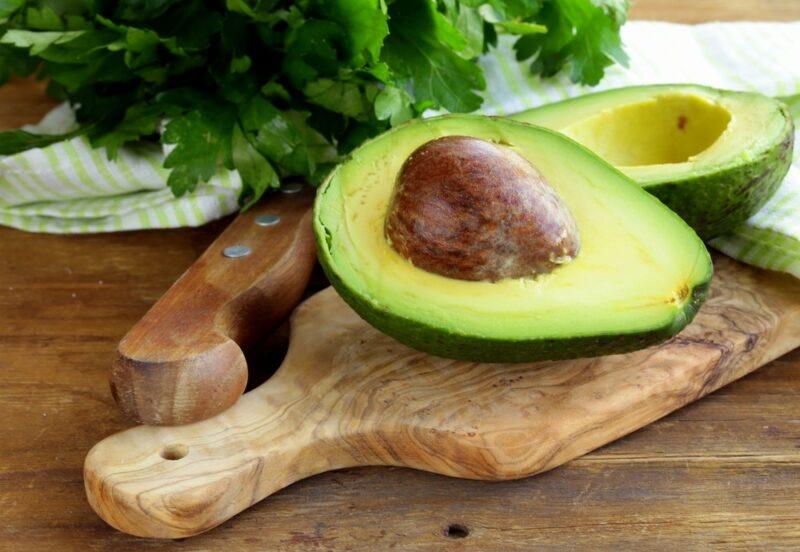
Avocados are often classified as oxalate rich, as you’re getting around 19 mg of oxalates in a whole avocado and any food with more than 10 mg of oxalates per serving is high in oxalates. Nevertheless, the levels here aren’t nearly as bad as with some other foods.
We’re also talking about a whole avocado. That’s more than many people will have in a serving. You might choose to have half an avocado or even less, which drops the oxalate content down considerably.
Dried Fruits

Regardless of the fruit that you choose, you’re going to get some oxalates. Dried fruits are by far the worst. Because these are dried, they have more nutrients and plant-based compounds per gram than fresh fruit.
This means that you get a decent amount of oxalates in a pretty tiny portion size. For example, a single date has more than 20 mg of oxalates, while five dried figs will give you around 24 mg of oxalates.
Some dried fruits are better than others. Dried apricots and apples are both good options. Even here, you’ll need to keep an eye on your portion sizes.
Some Spices

Spices are often promoted as being healthy, which is true. They’re a concentrated source of plant-based compounds and some spices, like turmeric and cinnamon, may have particular advantages for health.
The concentrated nature of spices is also a disadvantage. This is why some species are very high in oxalates on a gram-for-gram basis. For example, pepper tends to have more than 3,000 mg of oxalates in a 100 gram serving.
Black pepper, parsley, chives, and ginger are some of the worst choices for oxalates. The oxalate concentration won’t normally be a problem, as you only use a tiny amount of a herb or spice at any one time. Still, it’s worth paying attention to your quantities, especially if you use herbs and spices in most meals and in drinks like golden milk and chai tea.
Tofu

Soybeans contain a decent amount of oxalates, as do many soy products. The oxalate content could be reason enough to avoid soy, especially when you consider how much controversy surrounds this simple legume.
Tofu is an especially problematic soy product. Not only is it high in oxalates, but you’re often using a decent amount at a time.
Plus, tofu is often used as a meat substitute for vegetarians and vegans. Meat doesn’t contain oxalates at all, so you’re swapping a non-oxalate product for one that is high in oxalates. The pattern means that anyone who doesn’t eat meat needs to be even more careful with their food choices.
Soy Flour
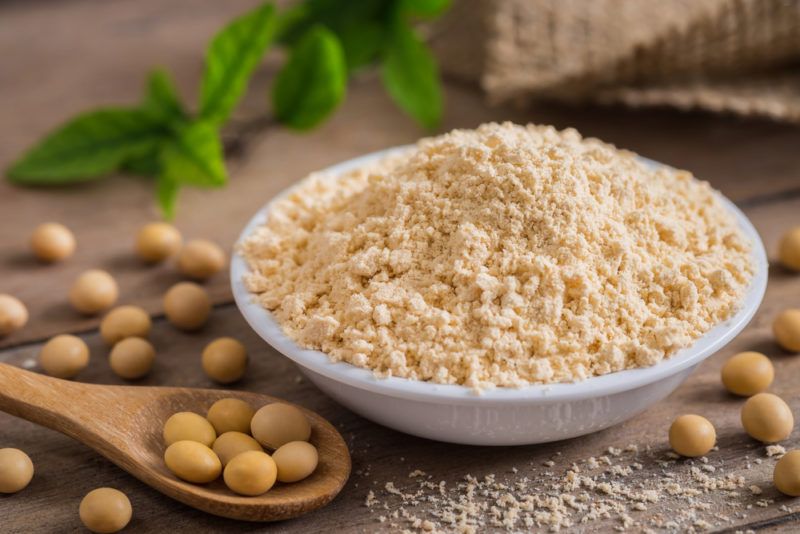
Soy flour isn’t as popular as tofu (which isn’t surprising when you think about how many different types of flour there are out there now). So, avoiding soy flour shouldn’t be too difficult. This is a good thing, as the oxalate content of the flour is notable.
Whether this is a problem will depend on the amount of soy flour used in your recipe and the serving size of the finished food. Still, you should easily be able to substitute for another type of flour, so why bother with soy flour at all?
Other Soy Products

The oxalate content of soybeans means you’ll need to be careful with any soy containing product. Many will be high in oxalates. This includes processed meat alternatives and even some fermented foods like miso paste.
The oxalate content of soybeans might be a serious blow to anyone following a vegetarian or a vegan diet, but this is also a reminder of the importance of diversifying the foods that you eat.
Potatoes

Potatoes aren’t a great choice at all. Even a single baked potato has close to 100 mg of oxalates and many foods made from potatoes end up even worse.
Take potato chips as an example. Many of us eat more potato chips than we intend to in a serving. That’s not a good sign for a food that is unhealthy anyway and happens to be high in oxalates.
You could have half a baked potato in a meal, which keeps the oxalate content low enough to be manageable. How well this works will depend on how much you like potatoes and what else you’re eating. Potato chips, on the other hand, should probably be skipped entirely.
Sweet Potatoes

Sweet potatoes are sometimes viewed as a healthier choice than potatoes, as they contain important pigment molecules, including beta-carotene. Sweet potatoes also offer a decent amount of fiber, along with nutrients like calcium and iron.
The oxalate content of sweet potatoes is similar to regular potatoes, although there will be some differences between sweet potato varieties.
Some Cereals

Oxalate is found in various grains. So, not surprisingly, some cereal products end up being high in oxalates too. We’re not just talking about cereals that are high in sugar and low in nutrients either. A product might seem relatively healthy, yet still contain a high amount of oxalates.
Key types to avoid include shredded wheat, mini wheat, and bran-based cereals. These cereals tend to have more oxalates than other types.
Beets

Beets aren’t as high in oxalates as spinach or rhubarb, but they’re still a high oxalate vegetable. This is a shame, as beets (also called beetroot) are nutritious. They contain some interesting plant-based compounds too, which shouldn’t be surprising given their vibrant colors.
Red beets feature betanin as a key pigment molecule, while yellow beets have vulgaxanthin instead.
If you’re going to rely on beets, try cooking them instead of having them raw. Boiling vegetables is the most powerful way to reduce oxalate content and you still end up with plenty of nutrients.
It’s not just the beets themselves that are oxalate packed. Beet greens, which are the leaves of beets, are also high in oxalates. These are often eaten, so you’ll need to watch out for them too.
Okra
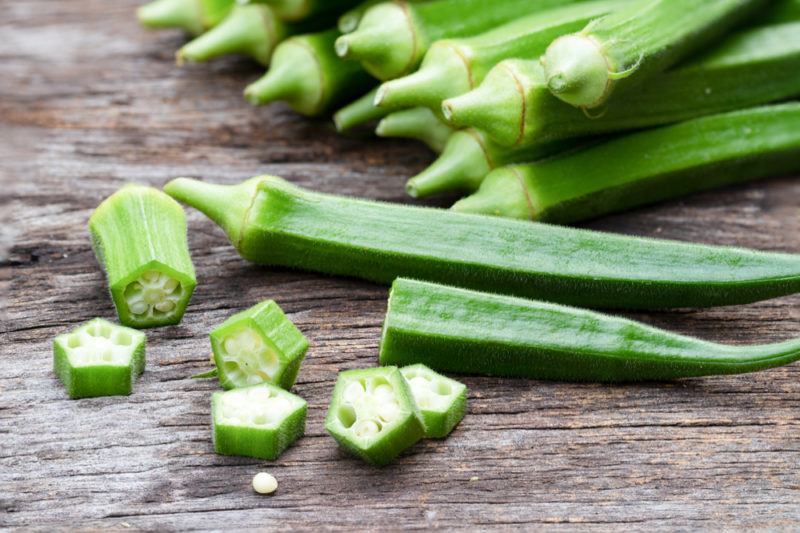
Okra goes by a few different names, including lady’s fingers, bamia, and bhindi. The vegetable is especially common in Southern cooking and often features in gumbo. It can be used in other types of stews too, as okra helps to thicken them up.
Okra is unusual in multiple ways. It has a delicate flavor that works well with many meals, but the flavor is also unique. There is no other vegetable quite like it. The texture is interesting too, as okra tends to be slippery and somewhat slimy when it is cooked.
Despite its popularity, the oxalate content of okra is a reason to be careful with it. You’re getting more than 50 mg of oxalates in half a cup of okra. That’s certainly on the high side.
Tomato Paste

Tomatoes contain some oxalates, but not an extreme amount. You can use tomatoes and most tomato products without too many problems.
Tomato paste is the exception to this rule, as it is so concentrated. It’s normally best to skip tomato paste entirely. You can always focus on fresh tomatoes instead, which will give you the same flavor with fewer oxalates.
Tea Leaves

Tea leaves are high in oxalates, with black tea being a particularly poor choice. Still, the news isn’t all bad for tea drinkers.
One advantage is that you’re often drinking tea with milk. The calcium in milk is important, as the ratio of oxalate to calcium is what affects your risk of kidney stones. This suggests that you should stick to the habit of having tea with milk. You may also need to limit iced tea intake, as this drink doesn’t use milk as often
How long you steep your tea bags for will also affect the amount of oxalates in the final drink. Shorter steeping times mean fewer oxalates. Keeping the steeping time short is an easy way to still enjoy black tea, even on a low oxalate diet.
How To Avoid Kidney Stones
Decreasing your intake of oxalate rich foods can notably lower your risk of kidney stones, but that’s not the only factor. Other approaches are important too.
Increase Your Water Intake
Being dehydrated can notably increase your risk of kidney stones. Many people use urine color as an indication of hydration. So, if your urine tends to be quite dark, you may need to consume more water.
Try Lemon Water
Lemon water is particularly good, as it keeps you hydrated and the citric acid can further lower your kidney stone risk. Other drinks that contain citric acid are relevant too, including orange juice.
Lemon water also tastes better than plain water, which could help you to drink more of it.
Increase Your Calcium Intake
Here’s something interesting. Calcium oxalate kidney stones are common, but that doesn’t mean that you should decrease your calcium intake. Quite the opposite. Getting insufficient calcium actually raises your kidney stone risk instead.
Thankfully, there are plenty of delicious calcium rich foods you can turn to. These are better than calcium supplements, as they provide you with plenty of other nutrients too.
Decrease Your Sodium Intake
Sodium is another area to keep an eye on. Too much sodium can raise the calcium in your urine, which then increases kidney stone risk.
This is a big issue for many people, as there are so many sodium rich foods in modern diets. Decreasing your reliance on processed foods and salt in your cooking can make a big difference.
Watch The Amount Of Meat
Animal-based protein tends to be high in purines, which isn’t good for kidney stones either This doesn’t mean you need to avoid meat entirely – just keep an eye on your intake.
Eat Plenty Of Healthy Foods
Whole grains, fruits, vegetables, and low fat dairy products are all very good for you and can help to lower the risk of kidney stones. Getting plenty of these in your diet can work wonders, particularly if you also decrease your processed food intake.
Frequently Asked Questions
What Are Oxalates?
Oxalate is a type of organic acid. It naturally occurs in plants and our bodies also produce it.
How Do You Flush Oxalates Out Of Your Body?
Drinking enough water makes a big difference to oxalate levels. So too does increasing your intake of calcium rich foods.
Are Oxalates Bad For You?
While high levels of oxalates can raise your kidney stone risk, oxalates are still harmless in low doses. Indeed, most healthy people don’t need to worry about the oxalate content of their foods at all.






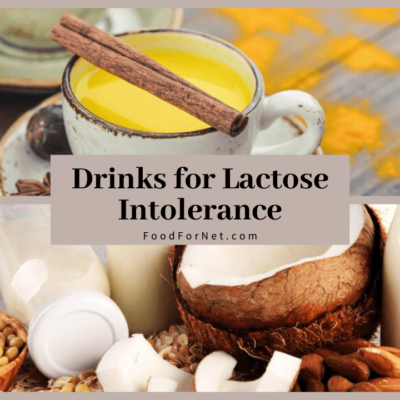










 18 Omega 6 Rich Foods Including Some To Avoid And Some To Enjoy
18 Omega 6 Rich Foods Including Some To Avoid And Some To Enjoy
Very informative. My bother in law as been diagnosed with kidney stones and I am trying to incorporate a meal plan to suit his needs. Thanks again
Your article for a general overview is very informative. There are differences in oxalate values on various sites, but most agree about the foods you reference in this article. It is difficult to choose a bread that is suitable because most have soybean oil to some degree, even the so called healthy breads. So that is a bit of a problem. I can’t find information on soybean oil and the oxalate count, but I read somewhere that oils of any kind were not a problem. That might not be true. I also saw a difference between eating red raspberries and the black variety so that is confusing as one of the sites don’t present red raspberries as really bad foods to avoid. Mango is listed as a low in oxalate fruit so I wanted to know if dried mango was okay to have. Not sure if you can answer the questions I posed, but I am hopeful you can.
I was wondering about dried mangoes also. I haven’t found anything on it but they make me symptomatic .
Wow. I had no idea. This is a real problem because many of the foods listed are important to my diabetes plan that has yielded me a 5.7 A1 c. I will have to rework it extensively until such a time as I can figure out why it is exactly I have hyperoxaluria.
There are several vectors involved. Why aren’t gut bacteria breaking it down? Why am I absorbing so much? Why doesn’t the liver produce the right enzymes to digest it like normal people do? Or do I have a whack biological problem where my body produces excessive oxalate through metabolizing fructose or other bio chemicals?
You should look into the carnivore diet. Kendberry on YouTube. It’s amazing. Most people eating how we should don’t have anymore diebetes
Thank you for additional details on oxalates. I’ve had fibromyalgia for 13 years and it took a lot of research to discover that these delicious foods contributed greatly to my agony. Along with gluten and lectins oxalates immediately cause joint pain, fibro lump inflammation and that aching feeling of my skin being on fire. Yikes the gluten smell! The doctors listen and nod but don’t take effort to educate. Avoiding or limiting these foods not only gives me pain free days but dominoes into better blood glucose due to feeling better. Words to live by: never bake even a two inch dish of sliced rhubarb and strawberries in butter unless you have a death wish…
very helpful article
wonder if you have information on oxalate content in the following food:
kale, arugula, butter lettuce, Redleaf lettuce, broccoli, cauliflower, pistachio nuts, sesame seeds, olives, and olive oil
I’ve seen watercress listed as high and low oxalate. This is extremely irritating! Can anyone inform as to which is accurate? How is there such a discrepancy of the information between one source and another?
Good article here. More can be found from the University of Chicago’s extensive kidney stone diet research. The list there helped me know what salad greens were lower in oxalates. https://kidneystones.uchicago.edu/how-to-eat-a-low-oxalate-diet/
what can you drink that is low in oxalate .And what is high in oxalate
what are low oxalate drinks
I’m looking for a printed list of the oxalate levels in foods.
I hate the inconsistencies of the LOD. According to this list you can’t eat anything. Moss, maybe, but I guess it has too much oxalates
I am looking for the amount of oxalates in sprouted buckwheat groats and sprouted lentils.
Also, are sweet potatoes significantly lower in oxalate if peeled?
Is there anywhere I can find this information?
I have severe allergies/candida and the foods I can eat are limited.